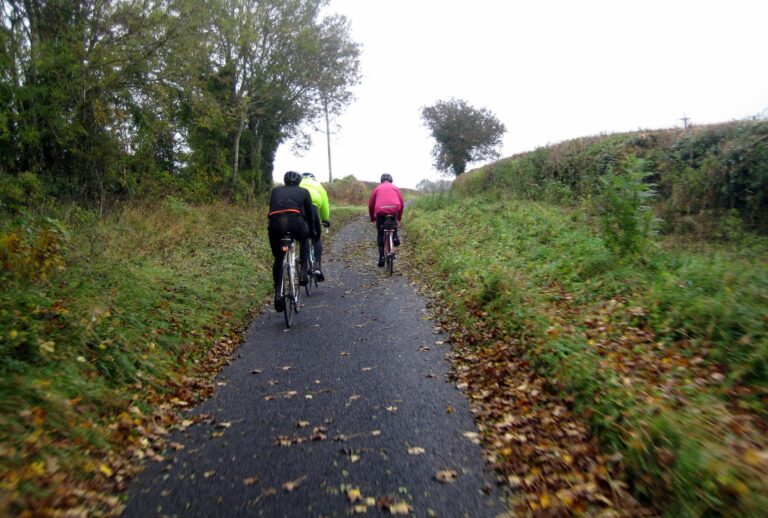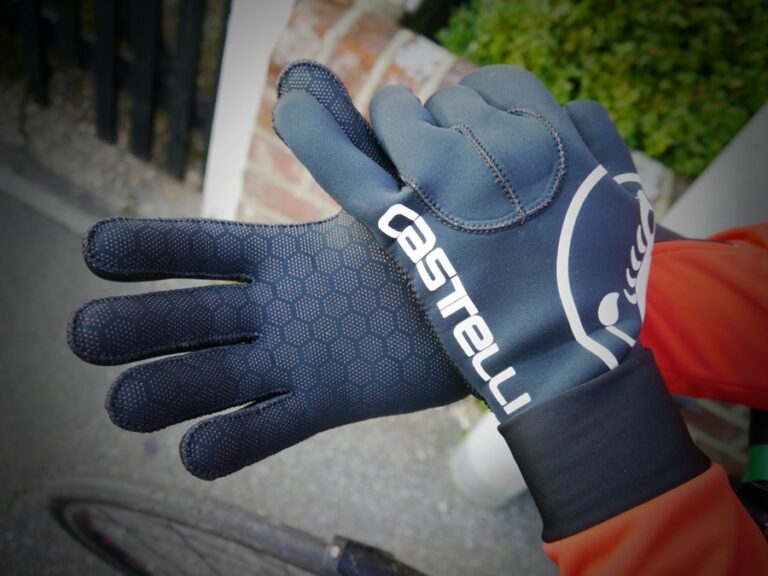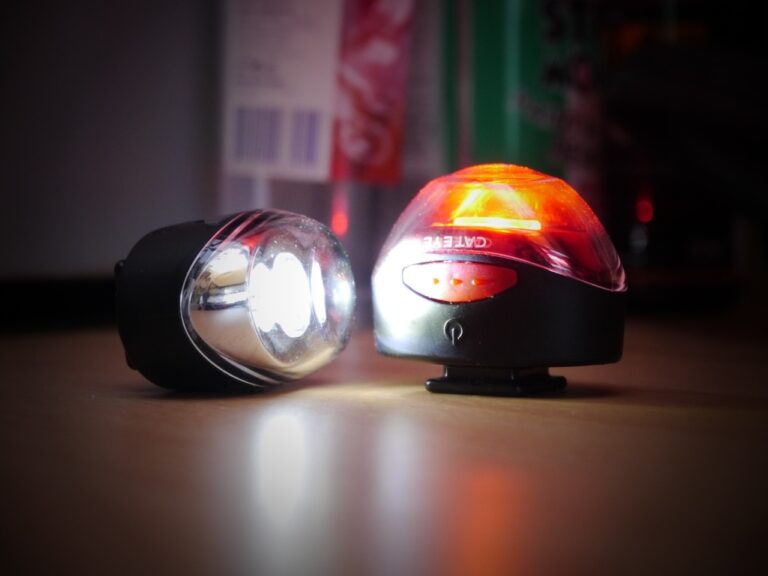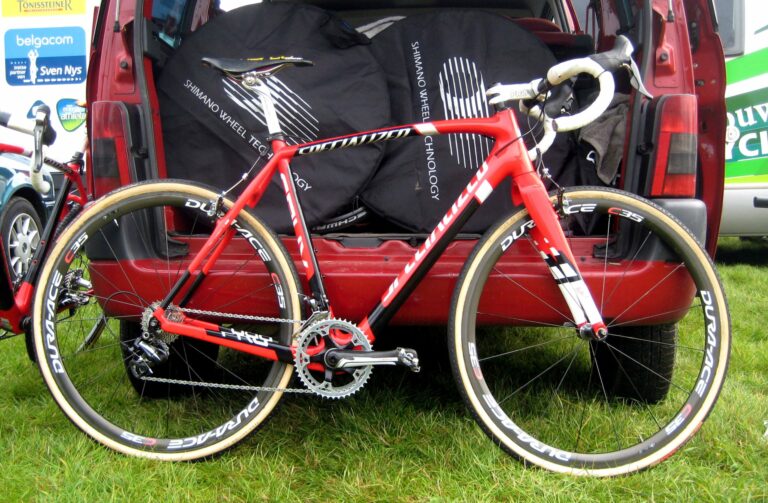Tour de France race director, Christian Prudhomme, unveiled the route for the 100th edition of cycling’s most prestigious race on Wednesday. We’ve had time to digest the route and pick out six of the key stages.
A double ascent of Alpe d’Huez is the highlight of a well-balanced route which should leave the general classification open ahead of four stages in the Alps (one individual time trial and three road stages). Otherwise, the route includes 28 mountain climbs ranked hors, first or second category, and four summit finishes.
It’s a course which suits the abilities of Chris Froome, who will likely start the race as Team Sky leader, with defending Tour champion Bradley Wiggins returning the favour to his fellow Brit by playing the role of super-domestique.
Let’s take a closer look at the route.
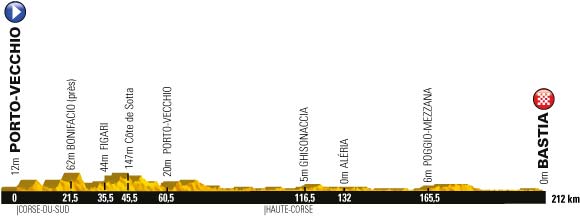
Stage one: Porto Vecchio-Bastia, 212km
The Tour de France has opened with a prologue every year since 1967, except in 2008 and 2011, when both editions began with a stage which suited the peloton’s puncheurs. The opening stage on the island of Corsica in 2013 is, however, pan flat and offers the Tour’s pure sprinters the first chance to pull on the yellow jersey on day one since 1966.
Step forward Mark Cavendish. The Manx Missile should have a full squad at his disposal having signed for Omega Pharma-QuickStep. Should Cavendish win the 212km stage from Porto Vecchio to Bastia, he will become only the sixth Briton to wear the maillot jaune after Tom Simpson, Chris Boardman, Sean Yates, David Millar and Bradley Wiggins.
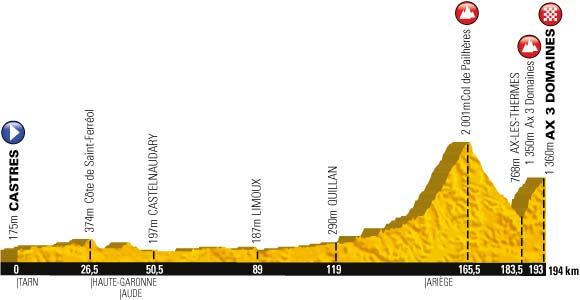
Stage eight: Castres to Ax-3-Domaines, 194km
The race will feature four summit finishes – more than the previous three editions of the Tour – and the first comes after a week of racing. Stage eight is the first of two mountain stages in the Pyrenees and will see the general classification contenders come to the fore.
The 2013 route is punctuated by steep ascents and the first major climb of the race, the Col de Pailhères, sets the tone, with 15.3km of winding roads at an average of eight per cent, rising to 2,001m (the only climb to go above 2,000m). The descent into Ax-les-Thermes is followed by the final showdown on the climb to Ax 3 Domaines (7.8km at 8.2 per cent), which has previously featured in 2003, 2005 and 2010.
The race won’t be decided at this early stage but it will provide the first major shake-up of the general classification and will provide an indicator of form ahead of the next two weeks.
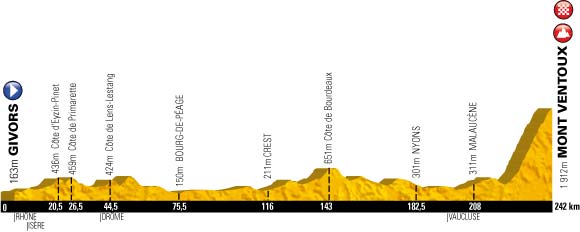
Stage 15: Givors-Mont Ventoux, 242 km
Mont Ventoux returns to the Tour de France after a three-year absence. It was on the steep slopes of the Giant of Provence that Bradley Wiggins cemented his surprise fourth place finish in 2009.
Stage 15 is a day of contrasts, with more than 200km of gently rolling roads to the lower ramps of Ventoux before the final 20.8km at an average gradient of 7.5 per cent. The longest stage of the race will take place on Bastille Day (Sunday July 14) – expect fireworks from the French riders, while British riders will pay tribute to Tom Simpson, who collapsed and died on the mountain in 1967.
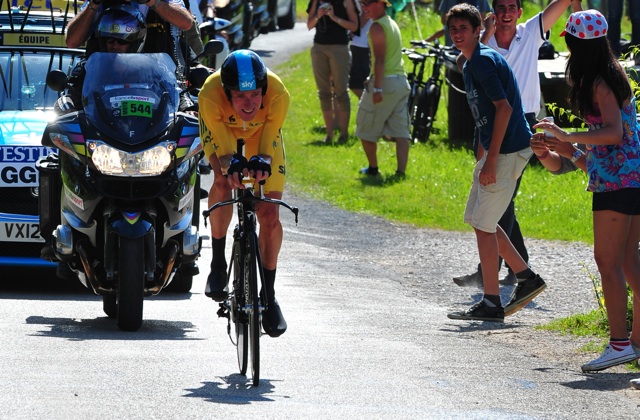
Stage 17: Embrun to Chorges, 32km (individual time trial)
Bradley Wiggins’ two individual time trial victories in 2012 played a key part in the Londoner becoming the first Briton to win the Tour de France. The 2013 route also has two individual tests against the clock, but both are significantly shorter. This test will, however, play a key part in shaping the general classification before three Alpine stages.
Unlike the race’s first ITT on stage 11, this is on the mountainous roads of France’s Hautes-Alpes region. The heavily undulating route climbs from the start and rises to a maximum altitude of 1,227m, making it well suited to climbers who can also time trial, like Chris Froome and Alberto Contador.
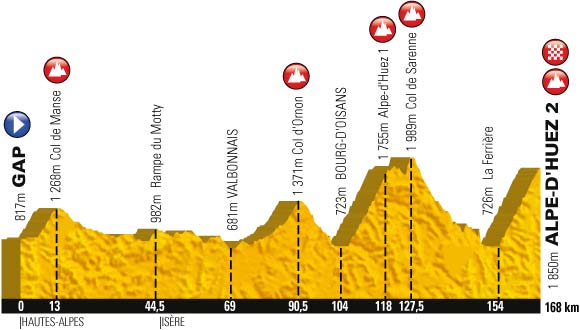
Stage 18: Gap to L’Alpe d’Huez, 168km
This 100th edition of the Tour pays tribute to two of its most infamous climbs. Having already tamed Mont Ventoux on stage 15, the riders will be confronted by a twin ascent of Alpe d’Huez on the first of three tough road stages in the Alps.
The climb (13.8km at 8.1 per cent) will feature for the 27th and 28th times in Tour history. Having left the town of Gap, the route goes over the Col de Manse and Col d’Ornon before the first ascent of Alpe d’Huez. The route then continues to climb past the ski station, rising to 1,989m at the summit of the Col de Sarenne, before a technical descent to the foot of the Alpe’s 21 hairpins for a second ascent. Expect huge crowds.
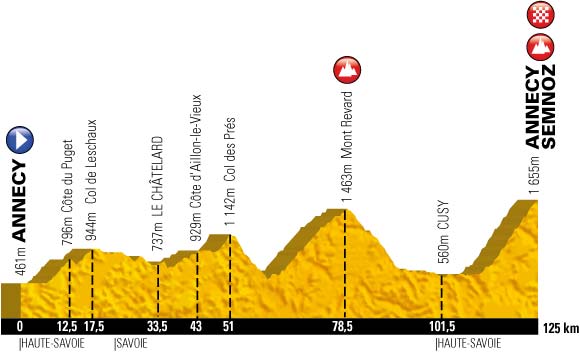
Stage 20: Annecy to Annecy-Semnoz, 125km
Having climbed Alpe d’Huez twice on stage 18, and ascended five categorised climbs on stage 19, this is the final day in the Alps and the race organisers are hoping the general classification battle is still alive ahead of the Tour’s final showdown on the climb of Le Semnoz above Lake Annecy. Amateur cyclists riding the Etape du Tour will tackle this stage two weeks before the Tour de France arrives.
It’s a short stage, at just 125km, which should encourage fast, attacking racing from the off. The route opens will a succession of minor, uncategorised climbs before the climbing starts proper on the long ascent of Mont Revard (15.8 per cent at 5.6 per cent), which is then followed by the super-steep summit finish to Le Semnoz – 10.7km at an average gradient of 8.5 per cent.
With only the final processional stage in Paris to follow, the 2013 Tour de France champion will effectively be crowned on the slopes of Le Semnoz.
Discuss in the forum

